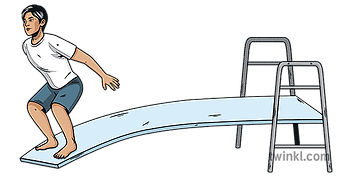Vibrations of Thin Plates
To view the detailed final project report, click here.
Aim -
To study the vibrations of thin plates by learning the essential theories and corroborating with some existing results in the literature as part of the Computational Structural Dynamics course (Jan-May 2021) by Assoc. Prof. SF Ali.
Summary -
Understanding the vibration of thin plates has been a point of interest for engineers due to their applicability in a wide range of domains. These include controlling vibrations of sheet metal structures and the fluttering of the airplane wings. To understand these vibrations, engineers resort to approximate theories that explain real-life observations. These theories provide differential equations governing the plate vibrations, which are then analyzed and solved for, depending on the system's parameters (such as length, width etc.).
A widely used theory is called the Kirchhoff-Love plate theory. It assumes the plate's deformations to be infinitesimal, which results in linear governing differential equations. The well-established method to study such linear vibrations makes the use of the concept of 'modes.' The modes of vibration represent certain characteristic motions of a system, wherein all material points reach their extreme positions and cross their equilibrium positions simultaneously. The frequencies of such vibrations are called the system's 'natural frequencies.' The modal motions are important since they possess very powerful mathematical properties. Most significantly, once the modes are found out, the system can be reduced to a system of linear and uncoupled differential equations, which are trivial to solve for. Also, the system responds to an external excitation most vigorously if the excitation is at its natural frequency. This phenomenon is best illustrated with the help of the stunning Chladni figures.
Finding the modes, however, is a challenging task for plates; more often than not, we cannot obtain concise analytical expressions for them. This problem of finding the modes is resolved by using approximate semi-analytical or numerical methods to estimate the modes. One such method used in this study is the Rayleigh-Ritz method. In particular, we implemented an elegant Rayleigh-Ritz-based method to calculate the modes of vibration which was first given for beams by Li (2000). This method was extended to plates in Li (2003) and Ducceschi (2014). Using this approach, we were able to accurately compute hundreds of mode shapes of beams and plates with several boundary conditions.
The Kirchhoff-Love theory's linear characteristic makes it relatively easy to deal with numerically and endows it with well-understood theoretical foundations of linear vibrations. Unfortunately, its assumption of infinitesimal displacements is only valid for a small fraction of vibrations in the real world. Cases such as the crashing of a cymbal or the bending of a diving board undoubtedly involve large displacements. To explain the vibrations of such systems, one must consider large-deformation theories, such as the von Karman plate theory. The von Karman plate theory results in nonlinear differential equations governing the vibratory motion. These equations are hard to solve and one must resort to numerical techniques. While we did not perform these computations, the underlying idea is to use the linear modes obtained from the analysis of the Kirchhoff-Love plate theory as a basis that governs the nonlinear motion.

Vid 1: A rectangular plate undergoing normal mode motion

Fig 1: Illustrating the large deformation of a diving board
References -
-
Vid 1: https://en.wikipedia.org/wiki/Vibration_of_plates#/media/File:Two_dim_standing_wave.gif
-
Fig 1: https://www.twinkl.ae/illustration/bent-diving-board-science-swimming-beyond-2
-
Li, Wen L. "Free vibrations of beams with general boundary conditions." Journal of Sound and vibration 237.4 (2000): 709-725.
-
Li, Wen L. "Vibration analysis of rectangular plates with general elastic boundary supports." Journal of Sound and Vibration 273.3 (2004): 619-635.
-
Ducceschi, Michele. Nonlinear Vibrations of Thin Rectangular Plates: A Numerical Investigation with Application to Wave Turbulence and Sound Synthesis. Diss. ENSTA ParisTech, 2014.